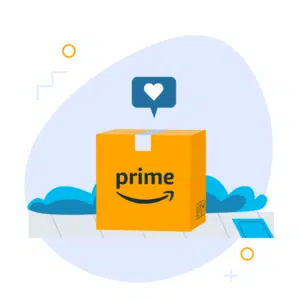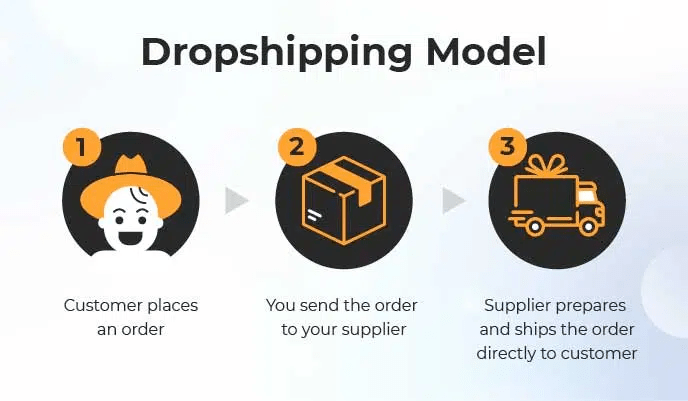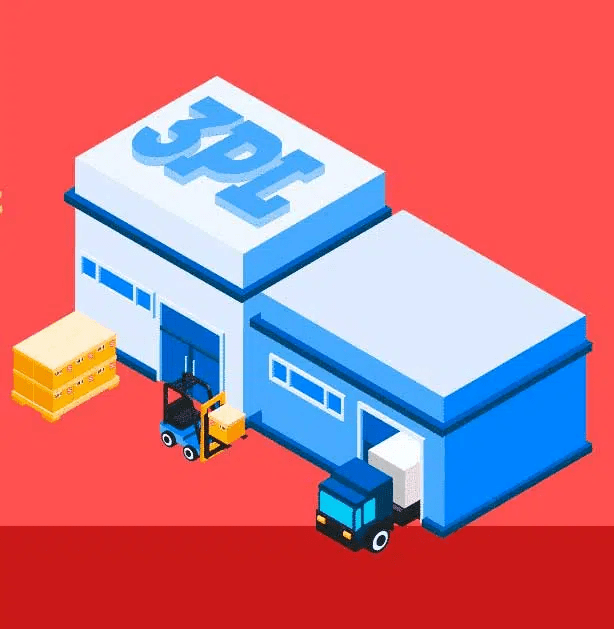
If you’re a top seller on Amazon, you’ll want to follow these ten Amazon FBM shipping requirements. These rules will help keep your account in good standing and protect your Seller Rating.
Different fulfillment methods are available for Amazon sellers, and it’s essential to understand the benefits and drawbacks of each before making a decision.
This blog post will discuss the different fulfillment methods available to Amazon sellers and the benefits of selling Amazon Fulfilled by Merchant (FBM).
Different Fulfillment Methods For Amazon Sellers

As an Amazon seller, you have a few different options for fulfillment. You can use Fulfillment by Amazon (FBA), Amazon Fulfilled by Merchant (FBM), Seller Fulfilled Prime, or dropship to customers.
Each of these fulfillment methods has its benefits and drawbacks that you should consider before deciding.
First, we’ll discuss the different fulfillment methods available to Amazon sellers. Afterward, we’ll share the Amazon FBM shipping requirements to follow if that’s the fulfillment method you choose.
Amazon Fulfilled By Merchant

Amazon Fulfilled By Merchant, or Amazon FBM, is a type of fulfillment where the seller ships their products directly to the customers.
Instead of shipping to an Amazon warehouse, this provides companies more control over their inventory and branding.
There are a few requirements that come with using Amazon FBM. To use this method, you’ll need to:
- Ship products on your own time.
- Keep inventory in your brand warehouse.
- Select your delivery carriers & fulfillment method.
- Provide top-notch customer service.
- Handle the return & refund process internally.
- Gain control over maintaining stock levels.
What’s nice about Amazon FBM is that businesses usually require fewer funds to get started. Having a lower entry requirement is helpful because you don’t have to worry about Amazon FBA weight, dimension, and warehousing fees.
However, seller fulfillment also comes with a set of challenges. Your brand must have a well-oiled process to ensure that products ship on time when you fulfill orders yourself.
Your company is also responsible for maintaining stock levels and dealing with customer service inquiries.
Overall, Amazon FBM can be an excellent option for businesses that want more control over their inventory and branding. Just be sure to have a solid process to ensure orders ship on time.
Amazon Fulfilled By Amazon

Another fulfillment method available to Amazon sellers is Amazon Fulfillment By Amazon or Amazon FBA. Of course, there are specific Amazon FBA shipping requirements brands must follow as well.
With Amazon FBA, businesses ship their products to an Amazon warehouse where Amazon Merchants store, package, and ship items to customers.
Amazon FBA can be an excellent option for businesses of all sizes. Amazon takes care of your company’s storage, packaging, and shipping, making things easier.
Additionally, using Amazon FBA qualifies all your orders for Prime Shipping. Thus, your products will be eligible for free two-day shipping to Prime members.
Because Amazon sees Amazon FBA as the gold-standard fulfillment method for marketplace sellers, it has several benefits. Be sure to read our post on what is Amazon logistics to learn details explaining how it works in-depth.
Some of these benefits include:
- You don’t have to worry about shipping products on time.
- Amazon handles customer service inquiries.
- Amazon processes returns and refunds.
- You gain access to Amazon’s Prime Shipping program.
There are also Amazon SEO benefits, so your brand will notice higher search engine placements. Controlling the buy box is also easier because Amazon is always aware of how much inventory your business has on hand.
Of course, there are a few drawbacks that you should be aware of before using Amazon FBA.
The main drawback to Amazon FBA is that it can be expensive. You’ll have to pay for Amazon warehousing, packaging, and shipping fees. If your brand already has a warehouse, this might not be the most cost-effective option for you.
Additionally, you’ll need to factor in the cost of sending your products to an Amazon warehouse in the first place. Before deciding, you should be aware of several additional fees associated with Amazon FBA.
Overall, Amazon Fulfillment by Amazon is an excellent option for businesses that want to take advantage of Amazon’s Prime Shipping program. Just be sure to factor in the additional costs of using this fulfillment method.
Seller Fulfilled Prime

Another eCommerce shipping strategy available to Amazon sellers is Seller Fulfilled Prime or SFP. This option is for businesses that know they want to handle shipments and fulfillment to their customer but also want to benefit from two-day shipping to Prime customers.
The Seller Fulfilled Prime program requires brands to meet higher performance standards than other Amazon fulfillment methods.
To be eligible for SFP, you’ll need to have a minimum number of orders per month, a low order-defect rate, and a low late shipment rate.
You’ll also need to provide two-day shipping to Prime customers on most of your products.
Ensuring that shipments go out on time can be a challenge for businesses, so Seller Fulfilled Prime is not always correct for companies just getting started on Amazon.
If your business meets the performance requirements and you’re ready to take on the challenges of SFP, you can apply to the program.
Once you’re accepted, you’ll be able to benefit from the following:
- You’ll be able to offer two-day shipping to Prime customers.
- You’ll have more control over your brand and how customers perceive it.
- You won’t have to worry about Amazon warehousing or packaging fees.
Of course, there are also some drawbacks that you should be aware of before using SFP.
The main disadvantage is that you’ll be solely responsible for ensuring that orders arrive on time.
If you’re not able to meet the performance standards, your account could be suspended or even removed from the program.
Additionally, you’ll need to have a robust warehouse and fulfillment operation to make SFP work for your business.
Suppose you’re not sure whether or not your business is ready for SFP. In that case, it’s best to start with a different fulfillment method and then transition to SFP once your business has grown.
Dropship

Dropshipping is a type of eCommerce fulfillment that allows businesses to sell products without carrying any inventory.
Instead, when a customer places an order on your website, you simply contact the supplier. They ship the product directly to the customer’s door.
Dropshipping is a popular option for businesses because it’s relatively low-risk and easy to start.
There are often no upfront costs or minimum orders, so you can start selling right away.
Additionally, you don’t have to worry about storing or shipping inventory, saving you time and money.
However, as a brand owner, dropshipping might not make much sense since it’s usually for sellers who want to sell various products from different suppliers.
Additionally, you won’t have as much control over the quality of the products you’re selling or the customer service process.
Thus, dropshipping might not be the best option if you’re looking to build a long-term, sustainable business.
Use A Third-Party Fulfillment Center

Suppose you don’t want to use Amazon’s fulfillment services and are not ready to handle fulfillment independently. In that case, you can always partner with a third-party fulfillment center.
Third-party fulfillment centers control their warehouses and staff, so you’ll have to work with them to determine storage fees, order minimums, and shipping costs.
Additionally, you’ll need to factor in the cost of using a third-party fulfillment center into your product prices.
However, there are some benefits to using a third-party fulfillment center, such as:
- Access to a larger warehouse and more storage space.
- Ability to ship products faster since the fulfillment center will handle all packing and shipping.
- Possibility of focusing on other aspects of your business since you won’t have to worry about fulfillment.
If you decide to use a third-party fulfillment center rather than an Amazon Fulfillment Center do your research. Your brand must find a reputable company that will be able to meet your needs.
Selling on Amazon can be a great way to grow your business. Still, you need to know the different shipping requirements and options.
Some third-party fulfillment centers even help businesses save on eCommerce shipping rates by sending packages in bulk.
By understanding the benefits and drawbacks of each fulfillment method, you can make the best decision for your business.
Now that you’re aware of how your company can send orders to customers let’s further discuss why some brands prefer to sell via Amazon Fulfillment by Merchant.
Afterward, we’ll explain ten Amazon FBM shipping requirements you should always follow if you want to build it into a successful sales channel.
Benefits Of Selling Amazon Fulfillment By Merchant
We’ve touched a bit on the benefits of selling Fulfillment by Merchant on Amazon, but let’s reiterate a few key points.
When you use the FBM program, your responsibilities are to:
Ship Products On Your Own Time
Your brand must be able to package and ship orders within two days after Amazon notify you of the customer’s purchase.
Of course, you can (and should) aim to ship much sooner than that, but Amazon gives you a window of 48 hours to get the order out the door.
One significant advantage of FBM is that your brand gets to control the shipping process. You’re not beholden to Amazon’s shipping times and procedures.
Instead, you can use your preferred carrier and send orders out on your schedule.
However, with this flexibility comes the responsibility of ensuring that customers receive their orders on time.
If you can’t meet Amazon’s two-day shipping window, you might want to consider using a different fulfillment method.
Keep Inventory In Your Brand Warehouse
Another significant advantage of FBM is that your brand gets to control the inventory. Your company can keep products in your warehouse and fulfill orders as they come in.
This gives you more flexibility when it comes to managing your inventory. You’re not beholden to Amazon’s stock levels or minimum order quantities.
Instead, you can keep as much or as little inventory in your warehouse as you’d like. Of course, this also means that you’re responsible for maintaining adequate stock levels.
If you run out of a product that the merchant is fulfilling, you’ll have to deal with the customer service issue and the negative feedback.
Select Your Delivery Carriers & Fulfillment Method
When using Amazon’s FBA program, you’re limited to using Amazon’s shipping carriers and methods.
However, when you use FBM, you can choose your carriers and shipping methods.
Selecting your fulfillment method gives you more control over the shipping process and allows you to find the carrier that best meets your needs.
You can also choose the shipping method you think will be most efficient for your brand.
However, remember that customers will expect free shipping if they’re used to Amazon’s two-day shipping.
You’ll need to decide if you want to offer free shipping or if you’re going to charge for shipping.
If shipping costs are too high, customers will be less likely to purchase from your brand.
Provide Top-Notch Customer Service
Since you’re in control of the customer service process, you must provide excellent customer service.
Customers will contact you directly with any questions or concerns about their orders.
You must have a customer service team to handle these inquiries quickly and professionally.
Handle The Return & Refund Process Internally
You’ll need to handle the return and refund process internally when you use FBM. Thus, your brand must have a return policy and prepare to issue refunds.
It’s important to remember that customers will expect the same level of customer service from you as they would from Amazon.
If you can’t provide a similar level of service, you might want to consider using a different fulfillment method.
Gain Control Over Maintaining Stock Levels
Since you’re in control of the inventory, you’ll also be in control of maintaining stock levels.
You’ll need to decide how much inventory you want to keep on hand and ensure that you have enough product to meet customer demand.
If you run out of a product, you’ll need to contact the supplier and have more products shipped to your warehouse. This can take some time and might result in angry customers if you cannot fulfill orders on time.
Don’t Worry About Amazon FBA Weight & Dimension Fees
When you use Amazon’s FBA program, your brand pays fees for the weight and dimensions of your products.
However, when you use FBM, you don’t have to worry about these fees. Instead, you’ll only be responsible for the shipping costs.
Not paying Amazon FBA fees can save you significant money, especially if you’re selling heavy or oversized products.
Of course, you’ll still need to factor in the cost of shipping when you’re setting your prices.
If shipping costs are too high, customers will be less likely to purchase from your brand.
Now that you understand why some CPG brands decide to go with Amazon FBM rather than any alternatives let’s cover the ten Amazon FBM shipping requirements that your brand should always follow.
10 Amazon FBM Shipping Requirements To Always Follow
What makes one brand successful on Amazon while another one struggles? If you do a deep dive, you’ll find that it all comes down to the details.
The brands succeeding on Amazon pay attention to the small things that make a big difference.
When it comes to FBM shipping, you need to follow a few essential requirements to be successful.
Let’s look at the ten Amazon FBM shipping requirements that your brand should always follow.
1)Set Your Shipping Template In Amazon Seller Central
The first step is to set your shipping template in Amazon Seller Central. This is where you’ll enter all of the information about your products, including the weight, dimensions, and handling time.
You’ll also need to specify the shipping methods you offer and the shipping rates.
If you don’t set up your shipping template correctly, Amazon will automatically charge customers for shipping, resulting in angry customers and a lot of refunds.
And there’s no better way to lose customers than overcharging them for shipping. Today’s customers search for the best deals, and free shipping is often the determining factor in purchasing.
2) Establish A Default Handling Time
The next step is to establish a default handling time. Default handling time defines how long it will take you to process an order and get it ready for shipping.
You’ll need to consider the time it will take to pick, pack, and label your products.
If you have a lot of products in your inventory, it might take you a few days to process an order.
In this case, you’ll need to specify a handling time of three or more days.
On the other hand, if you have a small inventory and can process orders quickly, you can specify a handling time of one or two days.
The important thing is to be realistic about the time it will take you to process an order.
If you underestimate the handling time, you might overpromise and under-delivering, resulting in angry customers.
And if you overestimate the handling time, you’ll needlessly delay orders and cost your business money.
To find the right balance, look at your order history and see how long it typically takes you to process an order.
Once you understand your average handling time, you can set your default handling time in Amazon Seller Central.
Just remember to update your shipping template if your handling time changes.
3) Set Your Order Handling Service
The next step is to set up your order handling service. This is the service that you’ll use to fulfill your orders.
You can choose Fulfillment by Amazon (FBA) or Fulfillment by Merchant (FBM).
We’re assuming that your brand would prefer to handle orders on your own, so that we will focus on the FBM option.
If you choose to use FBA, Amazon will take care of picking, packing, and shipping your orders for you.
But if you choose FBM, you’ll be responsible for handling all aspects of fulfillment.
4) Get The Packaging Correct
Once you’ve decided to fulfill orders on your own, the next step is to get the packaging correct.
Boxing things correctly might seem like a small detail, but it’s vital.
Your packaging should be designed to protect your products during shipping. It should also be easy to open so that customers can quickly access their purchases.
You’ll also want to include packing slips in each box so that customers can easily track their orders.
And if you’re shipping internationally, be sure to include the proper customs forms.
Failing to do so can result in delays and additional charges.
To get started, take a look at your product packaging and see if there are any improvements that you can make.
If you’re not sure where to start, plenty of online resources can help you design the perfect packaging for your products.
Remember to keep your customers in mind when designing your packaging. The goal is to make their lives as easy as possible while also sharing any safety notices or product information that Amazon requires on the box.
5) Don’t Include Marketing Materials
One of the often forgotten Amazon FBM shipping requirements is not to include marketing materials in your orders.
This might seem like an excellent way to promote your brand and increase sales, but it’s against Amazon’s rules.
The only thing you’re allowed to include in order is the product itself, and any packaging or packing slips necessary for fulfillment.
Any other materials, such as coupons, flyers, or brochures, should be left out.
If you’re caught including marketing materials in your orders, you could face penalties from Amazon. So it’s just not worth the risk.
Instead, focus on other ways to market your products, such as social media or email marketing.
There are plenty of effective marketing channels that don’t involve putting materials in people’s orders. Be sure to find the best ones for your business and stick to them.
Following these Amazon FBM shipping requirements will help you avoid any problems fulfilling your orders.
It might seem like a lot of work up front, but it’s worth it in the long run.
By taking the time to set things up correctly, you’ll be able to focus on more important things, like growing your business.
6) Consider Shipping Services
Amazon FBA uses various shipping services to meet its Prime 2-day order promise. These include USPS, UPS, and FedEx.
FBM sellers have a little more flexibility when it comes to shipping services. Determining which one works correctly for your business will take trial and error.
We recommend considering the following when making your decision:
- Shipping time: How fast do you need orders to be delivered?
- Cost: What’s your budget for shipping?
- Tracking: Do you need tracking information for your demands?
- Insurance: Does the shipping service offer insurance in case of lost or damaged orders?
- Returns: How will you handle returns if a customer is not satisfied with their purchase?
Answering these questions will help you narrow down your options and find an exemplary shipping service for your business.
Once you’ve found a few benefits that work well for you, try them out on a small scale to see how they perform.
You can then gradually increase your use of them to understand better how they operate. Just be sure to track your orders carefully to spot any problems early on.
7) Follow Prep Guidance Guidelines
Although you’re not shipping products to an Amazon warehouse with its own Amazon FBA shipping requirements, you still need to follow specific guidelines to ensure your products are properly prepared for shipping.
This includes making sure all items are new and in working condition, removing any security devices, and having all required components.
You can find a complete list of prep guidance requirements on Amazon’s website. Be sure to familiarize yourself with them before you start shipping orders.
It might seem like a lot of work to prepare your products for shipping, but it’s essential to do it correctly.
By following the prep guidance requirements, you can ensure that your products arrive safely and in good condition. This will help reduce the number of returns and customer complaints.
8) Monitor Your Return Metrics
It’s essential to keep an eye on your return metrics, even if you’re not shipping through Amazon FBA.
Returns can be a significant problem for online sellers, so it’s essential to do everything you can to minimize them.
There are a few key metrics that you should track:
- Return rate: This is the percentage of orders that are returned.
- Return to sender rate: The percentage of returns sent to you instead of being exchanged or refunded.
- Refund rate: This is the percentage of orders that are reimbursed.
- Exchange rate: This is the percentage of orders that are exchanged.
You can find these metrics in your Amazon Seller Central account. Be sure to check them regularly and take action if you see a problem.
You can do a few things to reduce your return rate, such as offering free returns, providing clear return instructions, or offering customer support.
Find the solution that works best for your business and stick with it.
Returns are inevitable, but you can keep your business running smoothly by taking steps to reduce them.
9) Ship On Time, Every Time
When it comes to Amazon FBM shipping requirements, one rule you cannot forget is to ship on time.
This means that you need a system to track your orders and make sure they’re shipped out as soon as they’re placed.
You can use a tool like Shipstation to automate your shipping process and make it easier to keep track of your orders.
Otherwise, you’ll need to manually track your orders and make sure they’re shipped out promptly.
Shipping on time is essential for two reasons:
First, it helps you avoid customer complaints. If an order arrives late, the customer will be upset and may leave negative feedback or a bad review.
Second, it helps you avoid penalties from Amazon. If you consistently ship orders late, Amazon may take action against your account.
So make sure you have a system to track your orders and ship them out as soon as they’re placed. It’s the best way to avoid problems down the road.
10) Choose Whether International Shipping Is Right
The final Amazon FBM shipping requirement to consider is whether or not you want to ship internationally.
Shipping internationally can be a great way to expand your business, but it’s not right for every brand.
There are a few things you need to consider before you decide whether or not to ship internationally:
Do you have the necessary resources? Shipping internationally requires extra time and effort. You’ll need to research shipping rates, customs regulations, and more.
Do you have a good understanding of the market? It’s essential to do your homework before you start selling in a new country.
Research the competition and make sure there’s a demand for your products overseas. If not, no problem. Instead, focus on selling to your domestic market.
These Amazon FBM Shipping Requirements Are Key
Following all of the Amazon FBM shipping requirements isn’t always easy for brands turning Amazon into a significant online sales channel.
However, by following these Amazon FBM shipping requirements, brands can avoid many of Amazon’s penalties and create a better overall customer experience.
It may seem like there’s a lot to know, but it’ll become second nature with time and practice.
So get started today and make sure your shipping operation is running smoothly by following these ten Amazon FBM shipping requirements within your company.

